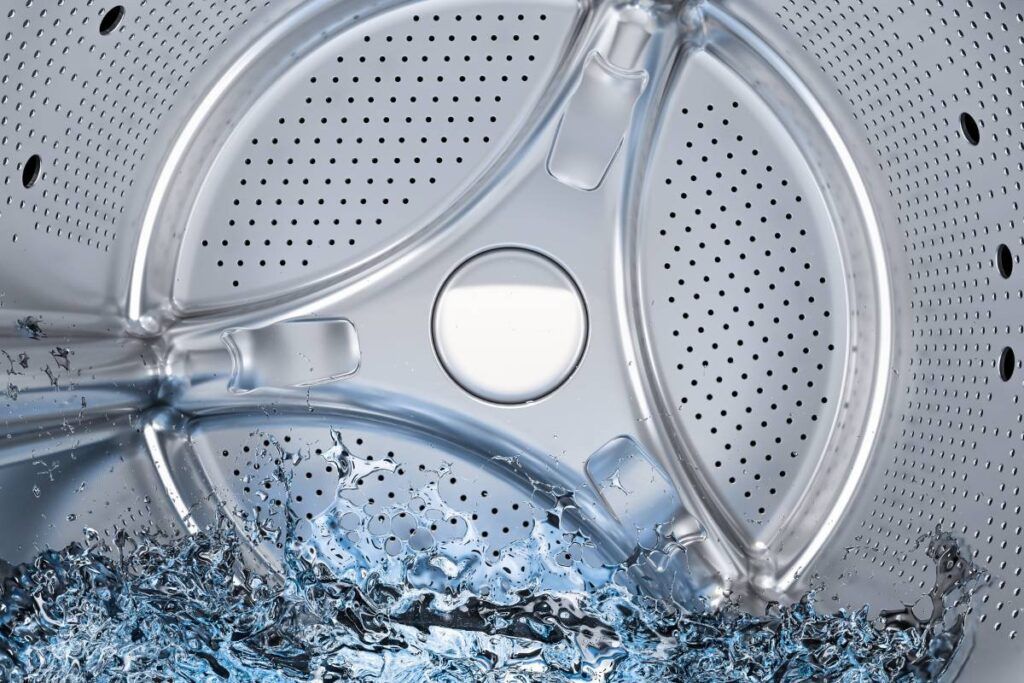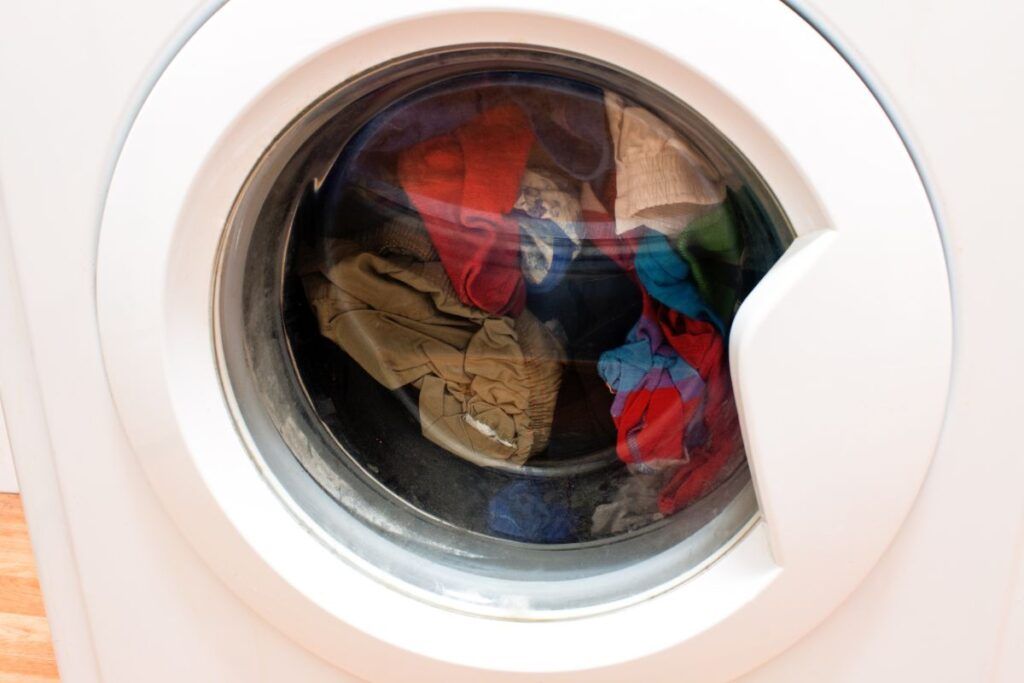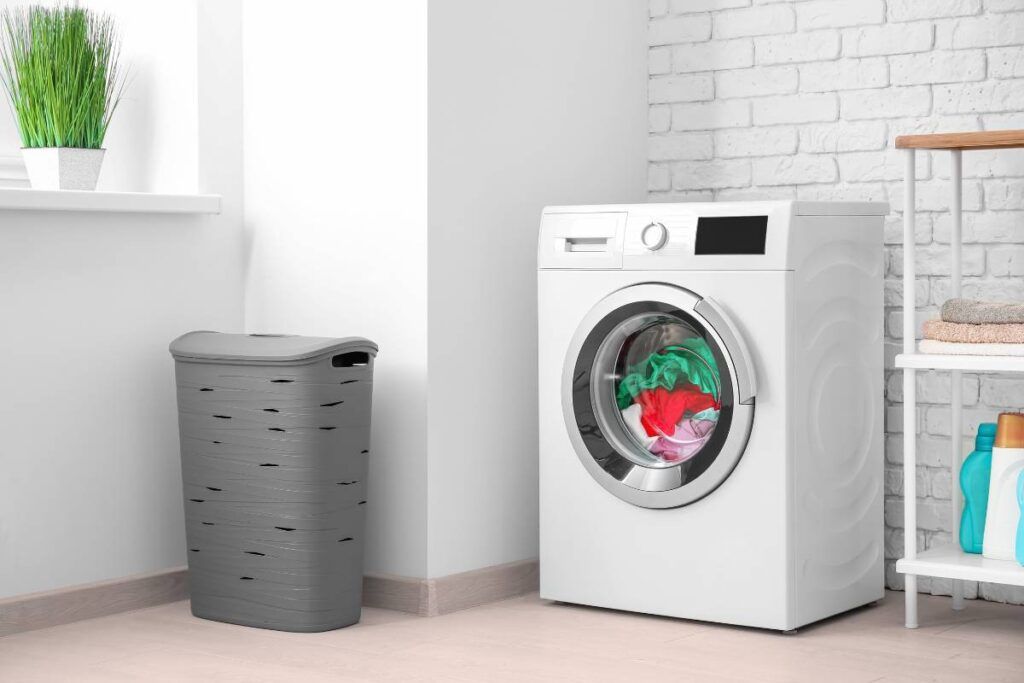Owning the washing machine makes the laundry easy. Still, it also causes issues in the long run. Water sitting at the bottom of the washer is one of the common issues in the washer. Let’s discuss it in detail.
A clogged or damaged drain pump, a blocked drain hose, or a malfunctioning water inlet valve can cause water to sit at the bottom of a washer. It is important to identify and fix the underlying issue to prevent water damage and ensure the proper functioning of the washer.
You can fix the issue by unclogging the drain hose and the drain filter if these are causing the issues. In this guide, you will learn the common causes of water sitting at the bottom of your washer.

Check out our list of top-handpicked products for all your electrical, appliance, and HVAC system needs to keep your home running smoothly.
This post includes some affiliate links.Why is the water standing at the bottom of the washer?
Water standing at the bottom of the washer indicates draining issues.
I recently visited my friend’s house to have dinner.
After having spent a good time with them, my friend shared that he was struggling with a washer that was accumulating water at the bottom.
I was sure I could help him find the solution to the issue.
After researching the common causes, I helped him find the cause, and he successfully fixed the issue.
I shared the exact causes of why water is standing at the bottom of the washer to help you fix the issue if you are also facing trouble in your washer.
Here are the 10 reasons water sits at the bottom of the washer.
1. Clogged or Dirty Drain
The drain is essential in transferring the wastewater from the drum through the drain hose.
A drain is connected to the drain hose and is located at the bottom of the washing machine.
A drain catches the debris and lint particles, such as hair, coins, and soap residue.
It is essential to clean the washing machine’s drain at least once every three months.
Not cleaning the drain will result in a clog which prevents the water from flowing from the drum to the drain hose.
Due to a clogged drain, water will accumulate in the washer’s drum at the end of the cycle.
Check the drain of your washing machine for any clogs.
If the drain is clogged, you must unclog it to fix the draining issue.
A drain system of the washing machine includes a drain pump and filter.
Let’s see how to clean them in detail in upcoming points.
2. Incorrect Loading

Incorrect loading refers to the uneven and overloading of clothes in the washing machine drum.
If clothes are not evenly distributed in the washing machine, it will cause an imbalance in the drum.
So, check if you have loaded only the heavy clothes in the drum without balancing it with loading light clothes.
In such a case, remove heavy clothes such as blankets from the drum and add light clothes to balance the drum.
Also, check if the clothes are accumulated on one side, causing the imbalance in the drum.
If so, pause the washing cycle, and distribute the clothes manually to balance the load.
Consider referring to the user manual and following the instructions for loading the clothes correctly.
3. Drain Hose Issues
The Drain hose is attached to the drain of the washing machine at the bottom.
It collects the wastewater from the washing machine drain system to pass it through the drain pipe.
The drain hose is prone to the constant flow of water containing dirt and debris particles.
It is common for the drain hose to get clogged with all these debris materials.
That’s why professionals recommend cleaning the drain hose regularly.
Check the drain hose of your washing machine.
If it is the clog in the drain hose causing the draining issues, cleaning it will be the solution.
Unplug the washing machine from the electric outlet to clean the drain hose and turn off the water supply.
Move your washing machine from its original position away from the wall.
You can locate the drain hose attached to the drain pipe at the bottom of the washing machine.
Disconnect the drain hose by following the instructions given in the user manual.
Inspect the drain hose for any visible clogs.
Start by flushing the hot water inside the drain hose.
Prepare the vinegar solution by mixing 1 cup of vinegar into a water bowl.
You can also use baking soda to unclog the stubborn dirt.
Put the vinegar solution in the hose and pour baking soda into it.
Let it soak for 15 minutes.
After 15 minutes, use a drain snake to remove all the clogs from the washing machine.
Twist and turn the drain snake to remove all the clogs.
If the drain hose of your washing machine is still clogged, you can repeat the process until the clog is cleared.
Once clearing the clog, flush the drain hose with hot water.
Reattach the drain hose to the washing machine and secure it with clamps.
Plug in the washing machine and turn on the water supply.
Run the test cycle and check if the issue is solved.
4. Faulty Drain Pump

A drain pump is located at the bottom of the washing machine.
It contains a motor to push the water from the washing machine drum to the drain hose.
Its primary purpose is to catch the lint and debris particles from entering the drain hose, thus preventing clogs in it.
If the drain pump is not cleaned regularly, it will be clogged, resulting in water accumulation in the drum.
Inspect the drain pump of your washing machine.
Follow the instructions given in the user manual to access the drain pump.
Manually check if there are clogs in the drain pump.
If that’s the case, you must unclog it immediately.
Unplug the washing machine from the electric outlet to unclog the drain pump.
Turn off the water supply to prevent the water from flooding your laundry area.
Access the drain pump. The location of the drain pump may differ according to the brand and mode.
Referring to the user manual will help you find the exact steps to access the drain pump of your washing machine.
Use a brush to remove the clogs from the drain pump.
You can use a drain snake to remove the intense clogs.
Use mild detergent to clean the dirt in the drain pump using a soft cloth.
Once cleaned, assemble the washing machine and plug it into the electrical outlet.
Turn on the water supply and run the test cycle to check if the issue is solved.
5. Excessive Suds
Excessive suds result from excessive detergent during the washing cycle.
When loading clothes in the washing machine, it is common to be tempted to use more detergent, assuming it will make clothes crisp and shiny.
But that’s too far from the truth.
Using excessive detergent will leave a white residue on clothes.
It also causes excess suds in the drum, which builds up to cause clogs over time.
If the excessive suds clogs the drum, the washing machine will have a draining issue.
Check the drum of your washing machine and see if the suds are causing clogs in the drum.
In such a case, remove the suds buildup to facilitate smooth draining.
6. Overloading

We all like to get all the work done in less time, isn’t it?
But it must be applied while doing laundry.
I used to overload my washing machine to finish all the clothes in one go.
But it caused issues with my washing machine.
And I stopped doing it after realizing the possible issue it may cause.
Draining issues is one of the most common problems that occur due to the overloading of clothes.
As the washer cannot handle the load, it may accumulate water at the bottom of the drum.
Before loading the washing machine, know the loading capacity of your washing machine.
Refer to the user manual to understand the loading capacity of your washing machine.
Next time while loading the clothes in the drum, make sure you load according to its capacity.
Check if you are overloading your washer. If that’s the case, next time, try loading according to the capacity of your washer.
See if the issue is solved.
7. Malfunctioning Water Inlet Valve
The water inlet valve is located at the back of the washer.
Whenever the washing cycle is initiated, the machine transfers the signal to the water inlet valve through a sensor to open.
Once the water inlet valve is opened, water flows into the drum.
The water inlet valve closes when the drum is full.
If the water inlet valve is faulty, it may accumulate water at the bottom.
Check the water inlet valve of your washing machine. If it is faulty, replace it.
8. Pump Filter Issues

A pump filter is at the bottom of the washing machine near the drain pump.
The pump filter catches the debris and dirt particles in it to prevent clogs in the drain pump and the washing machine’s drain hose.
As it catches dirt and debris, it will get clogged if it is not cleaned regularly.
So, it is essential to clean the drain pump filter frequently.
Check if the pump filter of your washing machine is clogged.
If so, you can solve the draining issue by cleaning the pump filter.
Unplug the washing machine from the electric outlet to clean the pump filter.
Turn off the water supply to your washing machine to avoid water flooding.
Access the pump filter at the bottom of your washing machine.
The exact location of the pump filter may differ based on the model and the brand of the washing machine.
Consider referring to the user manual to figure out the exact location of the pump filter.
Now, remove the pump filter as instructed in the user manual.
You can remove the filter by twisting it in a counterclockwise direction.
Soak the filter in the detergent water and clear the clogs using a brush.
After cleaning the filter, let it dry for 5 minutes.
Reinsert it once it is completely dried.
Turn on the washing machine and check if the issue is solved.
9. Broken or Damaged Washer Parts
If you checked all the parts mentioned and still if the draining issue continues, check the interior parts of your washing machine.
It is the trickiest job that may require professional help.
Interior parts like the washing machine’s agitator, bearing, or tub seal may be damaged, causing drainage issues.
Start by checking each part and replacing it if it is faulty.
You must do this procedure only if you are experienced in working with heavy-duty electric appliances.
10. Hard Water Issues
Using hard water to do laundry will also cause issues in the long run.
Check if the water available in your area is hard water.
You can fix the issue by installing a water softener in your water tank.
Also, clean the washing machine’s interior regularly to avoid mineral buildup in the tank.
Check if using hard water is causing draining issues in your washer.
If that’s the case, remove the mineral buildup in the drum and drain pump.
You can use a vinegar solution to remove the mineral buildup.
Or else, schedule a professional cleaning service for efficient cleaning.
Final thoughts
Water sitting at the bottom of the washing machine will cause several issues, including health hazards and damage to the appliance, if not fixed immediately. In my friend’s case, he was not cleaning the pump filter and the drain pump regularly.
It was the reason for the draining issues in his washing machine. You can start analyzing all the ten common reasons to discover the cause of draining issues in your washing machine.
You can avoid such issues by regularly cleaning the drain hose, drain pump, drain filter, and washer’s drum. It will help avoid clog formation in the washer and drain system. I hope this article helped in solving the draining issues in the washer.
Why is the water not fully draining from my washing machine?
It may be due to the clogged pump filter. A pump filter is used to catch debris materials such as hair and coins. It prevents these debris particles from reaching the drain hose. If the pump filter is clogged, it may cause draining issues in the washing machine.
How do I know if my washer drain hose is clogged?
You can test a drain hose by running the drain cycle in your washing machine. While water is running through the drain hose, check if the water is backing up in the hose. If yes, the drain hose of your washing machine is clogged.
Reference: Washing machine; Drain(pluimbing) Wikipedia

